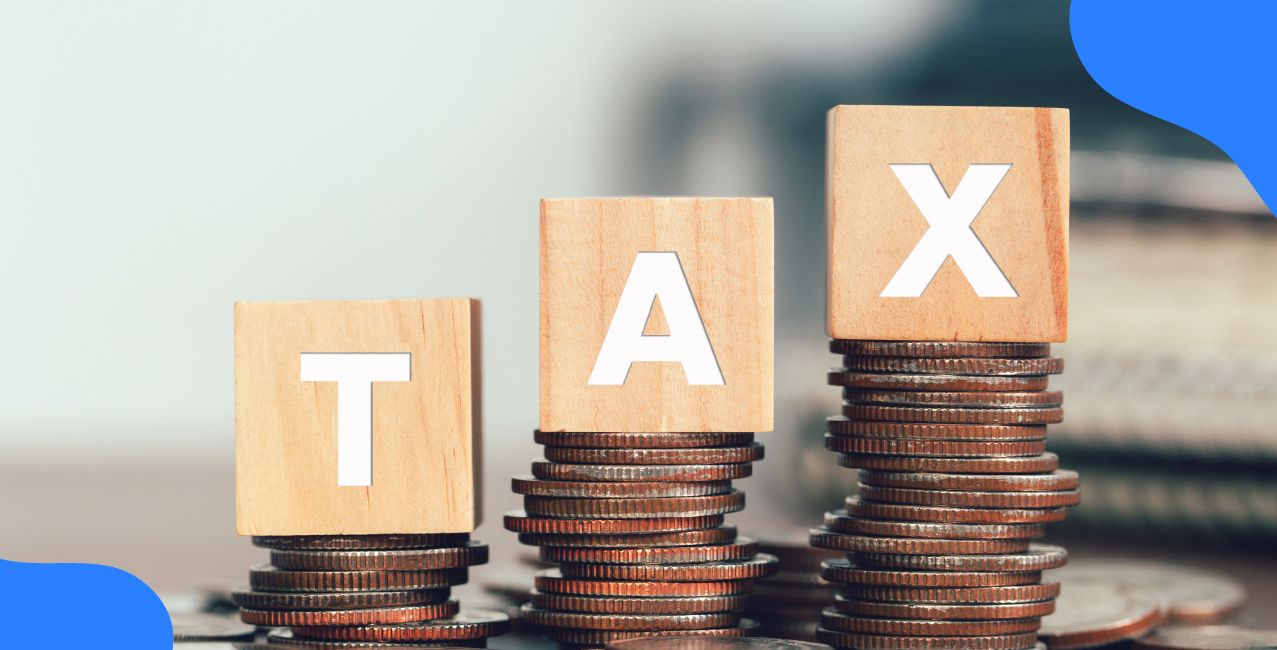
Author
LoansJagat Team
Read Time
10 Minute
21 Mar 2025
Why SIPs Are the Best Investment Strategy for Millennials in 2025 – Benefits & Growth Potential
Imagine Priya, a 28-year-old software engineer from Bengaluru, who decided to invest ₹5,000 monthly through a Systematic Investment Plan (SIP) starting in January 2015. Over the next decade, her disciplined approach led to a high corpus, showcasing the power of regular investing.
SIPs have become increasingly popular among Indian millennials. In January 2025, SIP contributions reached nearly ₹26,400 crore, slightly below December's record ₹26,459 crore. This marks an increase from previous years, reflecting a growing trend of disciplined investing among young professionals.
SIPs offer a structured and accessible investment strategy for millennials aiming to build wealth in 2025. By committing to regular investments, individuals can benefit from compounding and steadily progress toward their financial goals.
How SIPs Empower Millennials to Build Wealth in 2025
Millennials often find it hard to save money for the future. Many think they need lakhs of rupees to start investing. But that’s not true! With a Systematic Investment Plan (SIP), even a small monthly investment can grow over time.
SIPs help young professionals and first-time investors build wealth without stress. They also remove the fear of market ups and downs, making investing straightforward and disciplined.
Let’s see why SIPs are the best investment tool for millennials in 2025.
1. Affordable and Flexible Investing
Many millennials hesitate to invest because they think it requires a lot of money. But SIPs are different. They are affordable and flexible, allowing anyone to start with as little as ₹500 per month. If they earn more later, they can increase their investment amount.
Read More – How to Start SIP Investment – A Step-by-Step Guide for Beginners
Take Anuj, a 26-year-old marketing executive. In 2018, he started an SIP with ₹2,000 per month. After three years, he increased his SIP to ₹5,000 per month. By 2025, his total investment would be around ₹3,60,000, but his wealth would have grown significantly due to compounding.
Key benefits of SIP flexibility
- Start with ₹500 or ₹1,000 per month
- Increase or decrease investment anytime
- No penalty for stopping SIPs
- Invest automatically without worrying every month
Unlike fixed deposits (FDs) that require a lump sum, SIPs let you invest small amounts over time. This makes investing stress-free and suitable for young professionals.
2. Rupee Cost Averaging for Market Volatility
Stock markets go up and down. This makes many people afraid of investing. However, SIPs use rupee cost averaging, which helps investors buy more units when markets are low and fewer units when markets are high.
Let’s understand with an example:
Month | SIP Investment (₹) | NAV (₹ per unit) | Units Purchased |
Jan | 5,000 | 50 | 100 |
Feb | 5,000 | 40 | 125 |
Mar | 5,000 | 45 | 111.11 |
Apr | 5,000 | 55 | 90.91 |
May | 5,000 | 50 | 100 |
Instead of worrying about market fluctuations, an SIP investor benefits from market ups and downs. Over time, this reduces the overall investment cost and gives better returns.
Take Meera, a 29-year-old IT professional. She invested ₹5,000 monthly in an equity mutual fund through SIPs. Even when the market crashed in 2020, she continued her SIP. By 2025, her investment had grown significantly because she bought more units at lower prices during market dips.
3. Compounding Benefits for Long-Term Growth
Many millennials hesitate to invest because they think small amounts won’t make a difference. However, the power of compounding turns small investments into a considerable fortune over time.
Compounding means that your returns start earning returns, helping your wealth grow faster. The earlier you start, the more you benefit.
Take Rahul, a 25-year-old software developer. He invests ₹5,000 monthly in an SIP that returns an average of 12% annually.
- If he invests for 10 years, his total investment will be ₹6,00,000, and his corpus will grow to ₹11,60,000.
- If he invests for 20 years, his total investment will be ₹12,00,000, and his corpus will be a massive ₹49,00,000.
- If he invests for 30 years, his total investment will be ₹18,00,000, but his corpus will grow to ₹1.76 crore!
This is the power of compounding. Even though Rahul invested just ₹18,00,000 in 30 years, he earned over ₹1.5 crore in returns!
Why does compounding work best in SIPs?
- Interest grows on both investment and past returns
- The longer you stay, the more significant the growth
- Higher returns compared to traditional savings options
4. Discipline and Consistency in Savings
One of the biggest challenges for millennials is saving money regularly. With multiple expenses like rent, shopping, and travel, it’s easy to spend everything and forget about saving. SIPs automate your savings, making investing a habit rather than an effort.
Let’s take an example:
Scenario | Without SIP | With SIP (₹5,000 per month) |
Savings habit | Irregular, spends most income | Fixed monthly savings |
Investment growth | Only essential savings in the bank | Investment grows with the market |
Returns in 10 years | ₹6,00,000 in savings (no interest) | ₹11,60,000 with SIP (12% returns) |
Riya, a 27-year-old graphic designer, struggled to save money. She always planned to invest but never got started. Then, she set up an SIP of ₹3,000 per month.
Since the amount was auto-debited, she didn’t have to think about it. After five years, she checked her SIP account and was surprised to see her money had grown to ₹2,60,000 from just ₹1,80,000 of her investments.
5. Customisable to Life Goals
Unlike traditional investments that have fixed terms, SIPs are highly customisable. Whether you want to buy a house, save for a vacation, or plan for early retirement, you can adjust your SIP investment to match your financial goals.
Example 1: Buying a House
Amit, 30, wants to buy a house in 10 years. He needs ₹20,00,000 for the down payment. Instead of waiting to save this amount, he starts an SIP of ₹10,000 per month in an equity fund with 12% annual returns.
- After 10 years, his total investment = ₹12,00,000
- With SIP growth, his final corpus = ₹23,00,000 (more than his goal!)
Example 2: Planning a Vacation
Neha, 28, dreams of a Europe trip worth ₹5,00,000 in five years. She starts an SIP of ₹7,000 per month with 10% returns.
- After 5 years, her total investment = ₹4,20,000
- With SIP growth, her final corpus = ₹5,50,000 (she even has extra for shopping!)
Example 3: Early Retirement
Vikram, 27, wants to retire early at 50. He starts an SIP of ₹15,000 per month, increasing it by 10% yearly. With a long-term 12% return, he can build a corpus of ₹5-7 crore by the time he turns 50!
Why SIPs are perfect for life goals?
Adjust investment as per needs
No lock-in period (except tax-saving SIPs)
Goal-based investing for better financial planning
6. Tax Efficiency and Savings
Many millennials think investments are only for wealth creation. But smart investing also helps save taxes! SIPs in Equity Linked Savings Schemes (ELSS) allow investors to save tax under Section 80C of the Income Tax Act while earning high returns.
ELSS funds have the lowest lock-in period, just 3 years, compared to other tax-saving options like PPF (15 years) or FDs (5 years).
Take the case of Kiran, a 30-year-old IT professional who pays high taxes every year but never considers tax-saving investments.
In 2023, he invested ₹12,500 per month in an ELSS SIP. By the end of the year, he had invested ₹1,50,000 and saved around ₹45,000 in taxes (assuming a 30% tax bracket). At the same time, his investment kept growing with the market!
7. Diversification Reduces Risk
One big mistake many new investors make is putting all their money into one type of investment. For example, some only invest in stocks, while others only save in fixed deposits. But what happens if the stock market crashes or inflation eats away at FD returns?
Also Read - How to Invest in SIP – Step-by-Step Guide for Beginners
This is why diversification is essential. SIPs in mutual funds allow investors to spread money across different asset classes, such as stocks, bonds, gold, and international funds. This reduces risk and ensures steady growth even during market downturns.
Let’s take an example of two investors
Investor | Investment Type | Total Investment (₹) | Market Condition | Final Returns (₹) |
Rahul | Only Stocks | ₹5,00,000 | Market Crash | ₹3,50,000 |
Priya | SIPs in Diversified Mutual Funds | ₹5,00,000 | Market Crash | ₹4,80,000 |
Rahul, who put all his money in stocks, saw a huge drop in his investment value. But Priya, who invested through diversified SIPs, saw only a small decline because her portfolio was spread across stocks, bonds, and gold.
Types of Diversification in SIPs:
- Equity Funds: Invest in company shares, high-risk, high-return
- Debt Funds: Invest in government bonds, low-risk, stable returns
- Hybrid Funds: Mix of equity and debt for balanced growth
- Gold Funds: Invest in gold, a safe option in uncertain times
- International Funds: Invest in global markets for additional growth
Why diversification through SIPs is smart?
Reduces overall risk in investments
Protects money during market crashes
Ensures steady and consistent growth
It gives exposure to multiple asset classes
8. Inflation-Beating Returns
Inflation is the silent money killer. Prices of goods and services increase every year, reducing the value of savings. If inflation is at 6% per year, and your savings only grow by 4%, you are losing money in the long run!
SIPs, especially in equity mutual funds, can beat inflation. The stock market has given 12-15% returns on average over the long term, much higher than inflation.
Example: Impact of Inflation on ₹10,00,000
- If kept in a savings account at 3% interest:
- After 10 years, real value = ₹7,40,000 (after inflation)
- After 10 years, real value = ₹7,40,000 (after inflation)
- If invested in a Fixed Deposit at 6% interest:
- After 10 years, real value = ₹9,00,000 (after inflation)
- After 10 years, real value = ₹9,00,000 (after inflation)
- If investing in an SIP with a 12% return:
- After 10 years, real value = ₹19,30,000 (after inflation)
- After 10 years, real value = ₹19,30,000 (after inflation)
This proves that only investing in high-growth options like SIPs can beat inflation.
Take Ramesh, a 35-year-old businessman. He kept his savings in an FD for 10 years at 6% interest. Meanwhile, his friend Deepak invested in a SIP with 12% returns. After 10 years:
- Ramesh’s FD grew to ₹10,00,000 → ₹18,00,000
- Deepak’s SIP grew to ₹10,00,000 → ₹31,00,000
Deepak’s SIP gave him nearly ₹13,00,000 more than Ramesh’s FD!
Conclusion
SIPs are the easiest and smartest way for millennials to invest in 2025. They offer flexibility, affordability, and long-term wealth growth through compounding and rupee cost averaging.
SIPs also provide tax benefits, inflation-beating returns, and diversification, making them a low-risk and rewarding investment. Unlike fixed deposits or savings accounts, SIPs grow wealth faster and help meet life goals like buying a home, planning a vacation, or early retirement.
The best part? You don’t need a huge sum to start—just ₹500 per month is enough! Start today, stay invested, and watch your money grow.
FAQs
1. How much money do I need to start an SIP?
You can start an SIP with just ₹500 per month. Many mutual funds allow small investments to make it affordable for beginners.
2. Are SIPs better than fixed deposits (FDs)?
Yes. SIPs offer higher returns (10-15%), beat inflation, and provide flexibility, whereas FDs offer lower fixed returns and may not keep up with inflation.
3. Can I stop or change my SIP amount anytime?
Yes. SIPs are fully flexible—you can increase, decrease, or stop your investment anytime without penalties.
4. Are SIPs safe during market crashes?
Yes. SIPs use rupee cost averaging, helping you buy more units when markets are low and reduce risk over time.
5. Which SIP is best for beginners?
For beginners, Equity Linked Savings Schemes (ELSS) for tax benefits or large-cap mutual funds for stable returns are great options.
Other Informative Pages | |||
How to Rebalance Your Investment Portfolio for Maximum Returns | |||
About the Author

LoansJagat Team
‘Simplify Finance for Everyone.’ This is the common goal of our team, as we try to explain any topic with relatable examples. From personal to business finance, managing EMIs to becoming debt-free, we do extensive research on each and every parameter, so you don’t have to. Scroll up and have a look at what 15+ years of experience in the BFSI sector looks like.

Quick Apply Loan
Subscribe Now


